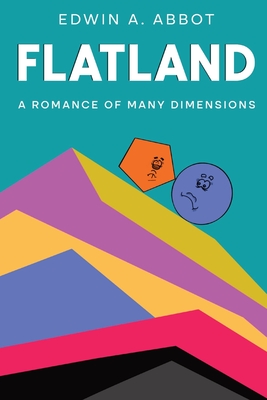Section 13: How I had a Vision of Lineland
bySection 13 unfolds on the eve of a significant moment in time—the second-to-last day of the 1999th year. As the Long Vacation began, I indulged in my favorite pursuit, exploring geometric problems well into the night. When sleep finally took me, my mind remained occupied with unsolved mathematical curiosities. In the midst of slumber, a dream presented itself, vivid and unusual. I observed countless tiny straight lines moving back and forth along a single path. They resembled women, or so I assumed from their slender forms. Among them were even tinier, shimmering points moving at the same speed. The entire scene was alive with a faint, rhythmic twittering—a strange soundscape punctuated by moments of complete stillness when the motion ceased. It felt more like watching a mechanical ritual than a society of intelligent beings.
Curious, I approached what appeared to be one of the larger female figures and attempted to speak. My first greeting received no reply, nor did my second or third. Frustration grew as the silence became almost rude, and I placed myself directly in her path, forcing her to stop. It was then that the truth startled me—the figure was not a woman at all but the Monarch of this line-bound realm. With dignity, he identified himself as ruler of the world and questioned my presence in his domain. Apologizing for my intrusion, I explained that I was a traveler from another world and asked him to describe his land. Yet our conversation was not easy. The King found it difficult to believe that anything he didn’t understand could exist and treated my ignorance as mockery. Still, with persistent questions, I managed to piece together the structure of his reality.
This peculiar kingdom was entirely linear—what he called his world was a single straight line. That line was not part of the world; to him, it was the whole of existence. Anything beyond it was inconceivable, not just unknown but truly nonexistent. He had heard my voice earlier, but because he could not see me in his narrow visual range, it confused him. Sound seemed to come from within his body, not from without, since he interpreted the external world as part of his own interior. When I finally spoke directly into his realm, he responded only because my voice aligned with his limited perception. To him, the idea of a second dimension—of something outside his line—was not simply unbelievable; it was impossible.
The people of this land, men as lines and women as points, were subject to strict physical constraints. All existed within that single line, with no ability to step aside or change lanes. Their visual world was reduced to dots, regardless of who stood before them—man, woman, or child. Personality and identity could only be inferred from voices, as the eye revealed nothing. Since no one could pass another, once individuals found themselves beside each other, their lives were permanently intertwined. A neighbor in Lineland was not just close; they were inevitable. This permanence mirrored marriage, binding lives together until death intervened. The concept of separation or individual space didn’t exist. Everything about their world was confined—motion, vision, interaction—governed by the singular direction of the line.
For modern readers, this dream serves as a powerful allegory. It reflects how people can live within narrow perspectives, unaware of realities that don’t align with their experiences. Lineland’s citizens are not unintelligent, but they are trapped by the shape of their understanding. They don’t resist truth maliciously—they simply cannot conceive of alternatives to their linear world. The Monarch’s disbelief mirrors human behavior in the face of radical new ideas. It becomes a lesson in the limits of perception and the challenge of teaching new truths. Just as the King mistook me for an internal voice, many mistake unfamiliar ideas for illusions or threats. It takes humility, both in dreaming and waking, to see past the edge of our own knowledge.
Reflecting on this encounter, one sees how dimensional boundaries represent more than physical limits—they are symbolic of intellectual ones. Lineland’s rigidity is not just spatial but mental. A society’s worldview, when left unchallenged, can become its prison. The dream didn’t just offer a glimpse into another realm—it served as a mirror to Flatland itself. Just as Linelanders cannot imagine a second dimension, Flatlanders scoff at the idea of a third. This realization prepared me for future revelations. What had first seemed absurd in another world now hinted at truths waiting to be discovered in my own.


